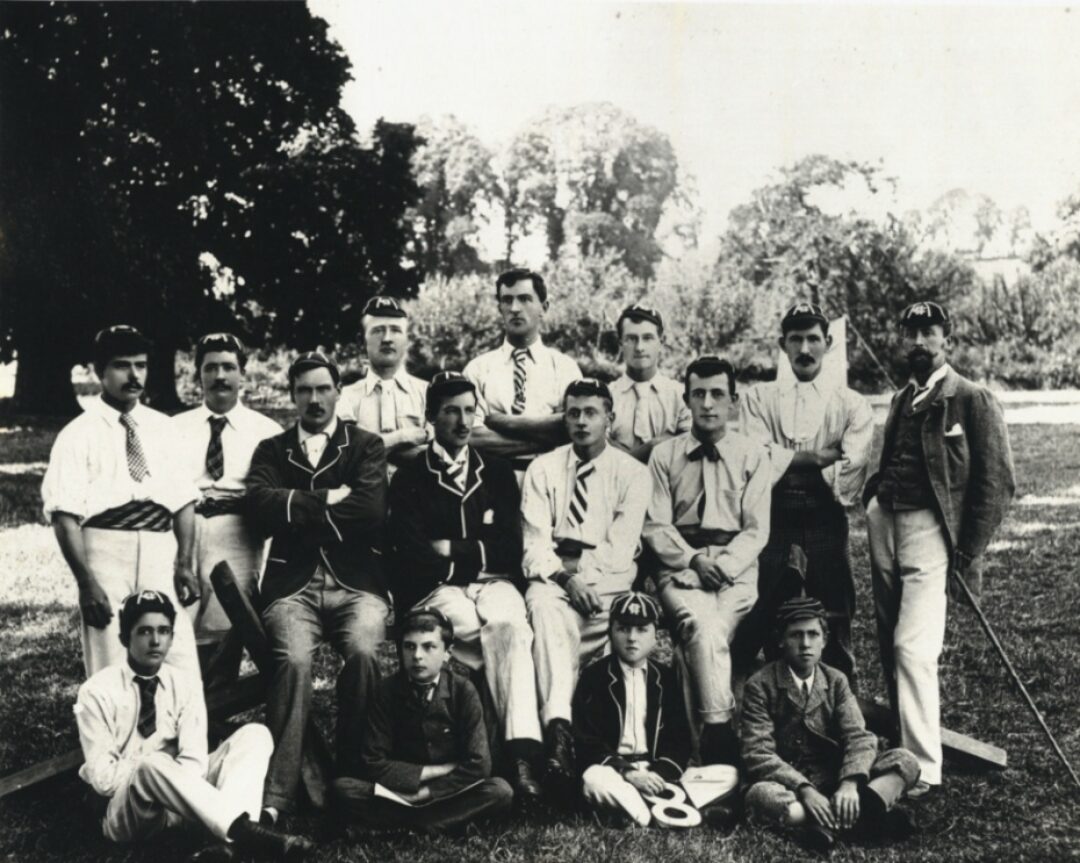Mr. and Mrs. Edward Portman will give a ball about January 11 to celebrate the coming of age of Mr. Ivo Vesey, Mrs. Portman’s eldest son by her first husband, Captain Eustace Vesey . . . To Mr. Portman, indeed, everything connected with dancing is more or less of a bore. He prefers hunting, shooting, or fishing in Norway. ('Festivities at Hestercombe', The Tatler, no. 78, [24 December 1902], p. 502.)
Always an avid sportsman, E. W. B. Portman had preferred first rowing (Eaton) and then polo (Christ Church, Oxford 1875-78) as a young man, but with a third pastime, cricket, enduring well into adulthood. The founding of the Hestercombe Cricket Club in 1895 saw ‘the ground in the park levelled and improved at great expense’ and, ‘as the club was becoming such an important one’, the Hestercombe eleven would soon be smartly attired in custom-made woollen caps with piping and the ‘H.C.’ monogram clearly embroidered on the front. However, it was hunting and fishing that increasingly occupied Teddy Portman’s leisure time as the years wore on. Teddy caught his first salmon (12lbs.) aged 25 in the Grand River, Southern Ontario, Canada, on July 9 th 1881 but thereafter took to the magnificent wilderness of southern Norway for his angling exploits. English travel literature had begun attracting well-heeled, often titled English sportsmen to the country in the 1830s with descriptions of Norway’s natural beauty, numerous salmon and trout filled rivers, excellent hunting and friendly people and with his friend and hunting companion, Kyril A. Chapman in tow, Teddy arrived to experience the country for himself in the summer of 1882. (Chapman, a familiar figure on Lord Portman’s Hunt, lived at Shillingstone Cottage, Blandford Forum, Dorset, less than five miles from the Portman family seat at Bryanston.)
The two men fished at Kjerstad on the Orkla, the longest river in Trøndelag county at 180 kilometres (160 km), until 1888 when they decided to try their luck further south on the legendary Laerdalselva River near Ljøsne in Vestland county, about 200 kilometres northeast of Bergen. Also known as the ‘Queen of salmon rivers’, the Laerdalselva flows through a stunning valley formed of steep lightly forested hillsides with occasional waterfalls that reach directly up to the Jotunheimen Mountains, home to the 29 highest peaks in Norway. The valley bottom, by way of contrast, is a mixture of small vegetable and fruit farms, meadow and forest. Kyril and Teddy were joined here by the latter’s brother-in-law, Robert Lawley and his good friend William Ernest Brymer. The MP for South Dorset, W. E. Brymer resided on the 2500-acre Islington Estate near Puddletown, and was a Colonel in the Dorset Yeomanry, Teddy Portman’s long time regiment.
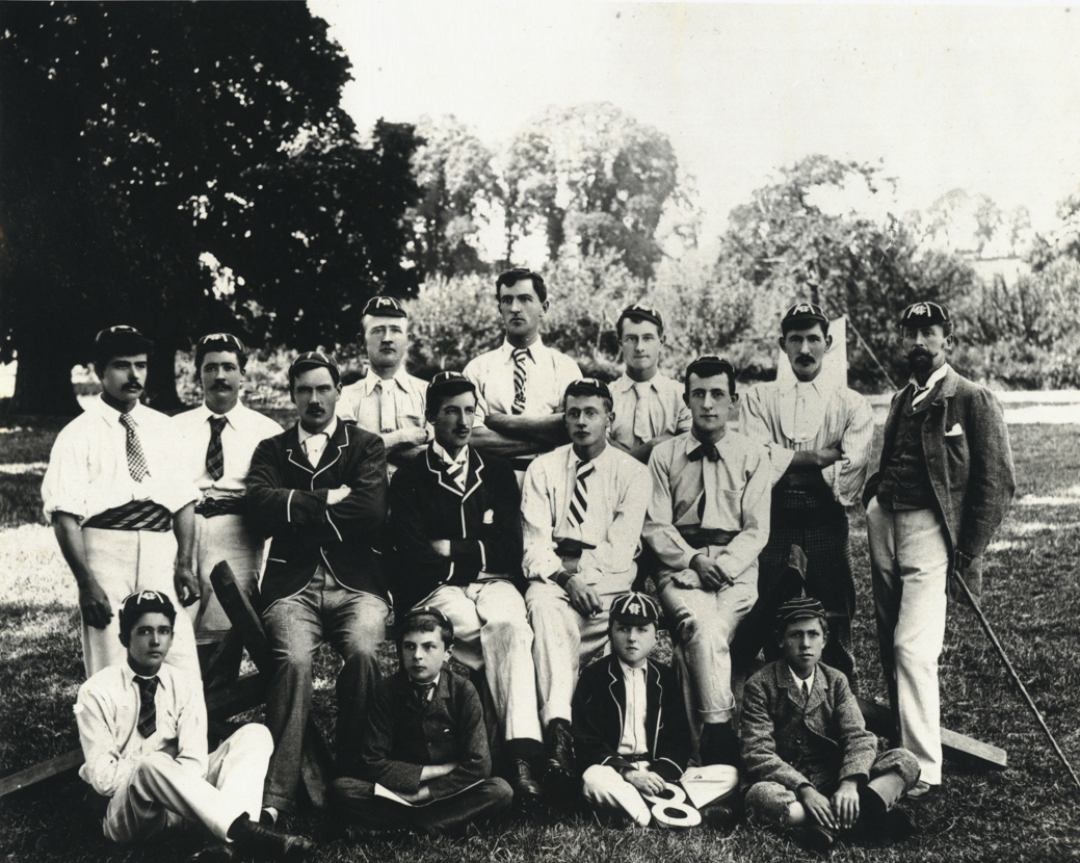
Having by now earned a reputation as a first-rate angler, Teddy began the 1889 salmon fishing season at Harang on the Orkla River in the company of F. W. Whitmore before returning south in June to the Laerdalselva where he fished without interruption until early September with W. A. Bailward, General Denne and Colonel Stuart. W. A. Bailward was a family friend, the best man at Henry Portman’s wedding. Lambert Henry Denne and John Ramsay Stuart were both retired British Army officers, veterans of the Crimean War (1853-6). Denne, a noted amateur cricketer, joined the Royal Horse Artillery in 1848, becoming a Lieutenant-colonel in 1874 and a full Colonel in 1879 before retiring with the honorary rank of Major-General in 1881. Stuart served with the Royal Scots Fusiliers and was appointed Commander-in-Chief Scotland in 1875, retiring three years later to accept appointments as Regimental Colonel of the 54 Regiment of Foot (1880) and Colonel of the 1st Battalion of the Dorsetshire Regiment (1881). But back to fishing. In 1890 Teddy Portman acquired 7 nearly all of the fishing rights on the Lærdalselva River on long term leases, only disposing of some in 1897 when his summer visits to Norway were starting to be curtailed by his new duties as Master of the Taunton Vale Foxhounds. In a letter to his oldest brother, Henry, dated Sunday July 30th 1893, Teddy enthused about the quality of the salmon fishing on his river domain, calling it ‘phenomenal’: ‘I have had A.I. sport: 20 days fishing – 2129 1bs. To my own rod, viz. 144 salmon and 14 grilse.’ (That Teddy toasted each catch with a whiskey from his ever-present flask could also account for the lively tone of the letter.) The meticulous fishing journal he kept from 1889 until 1907 also recorded Teddy Portman’s finest season, 1896, during which he landed a total of 3,350 pounds (1,520 kg) of Atlantic salmon in just thirty-five days.
I remember Portman. I was his ghillie. He was tough. He thought he could do whatever he liked. Once when he was fishing in Charlie-bø and didn’t catch anything, he smashed his rod into small pieces. But despite his temper Portman was popular throughout the village. (Anders Lysne quoted in Ida Marie Refsum Flinder, Kapteinsgarden Pa Ovre Lysne i Laerdal [Oslo: Astrup Fearnley, 2000], p. 61.
By 1900, E. W. B. Portman had spent 18 consecutive summers fishing Norway’s coveted salmon waterways. When not fishing one of the Laerdalselva’s clear rippling pools - which usually took place according to a strict routine in the morning after breakfast and in the late afternoon after lunch and a snooze -- he would relax with friends and family in the comfort of his eight bedroom lodge near Øvre Ljøsne, about 11 kilometres upstream of the terminus of the Laerdalselva River at Lærdalsfjorden, a branch of the main Sognefjorden. Built in 1825 as an unpretentious farmhouse on a plateau above the River, the two storey log dwelling was afterwards renovated and extended by another English sportsman, John Chaworth Musters of Annesley Park, Nottinghamshire. Following his purchase of the farm in 1876 J. C. Musters added a dining room, maid’s room, indoor toilet, and scullery on the ground floor, three new bedrooms and a toilet upstairs and a 'large porch in typical British "colonial style"' along the southern and eastern sides of the building.
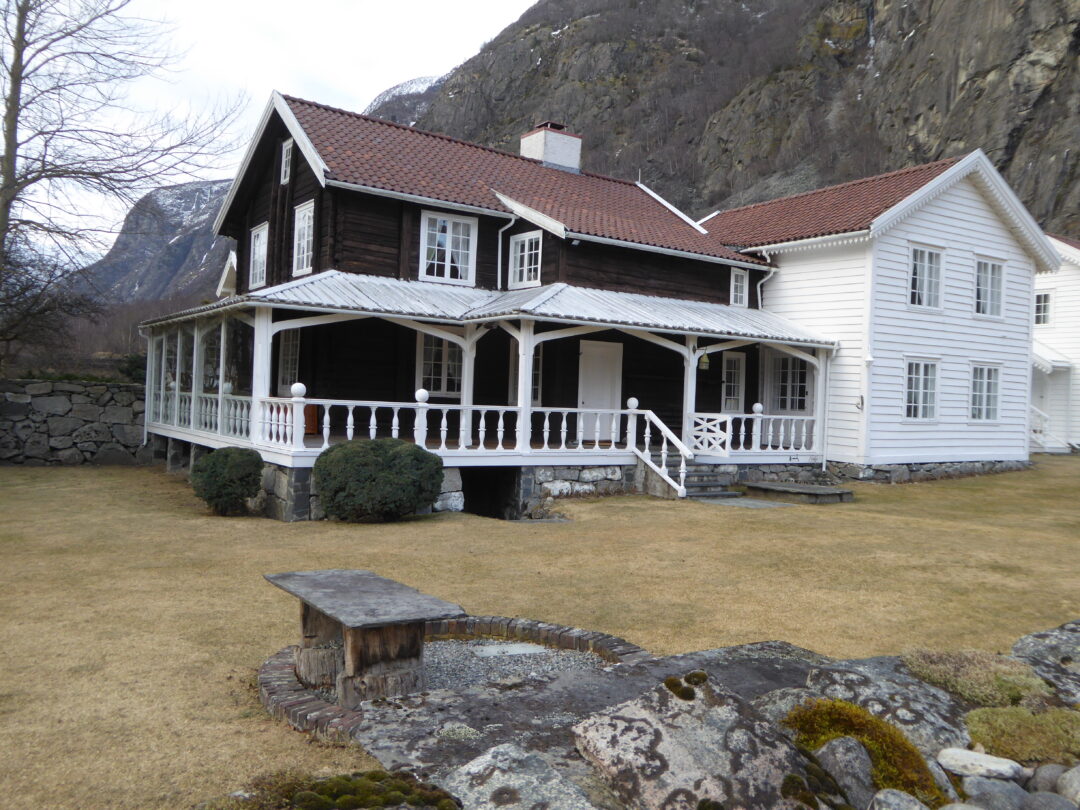
In October 1891 E. W.B. bought the improved fishing lodge ‘lock, stock and servants’ from Patric Musters, son of the late J. C. Musters, for 10,000 Norwegian Kroner (£106,452 today). His future guests there comprised retired British Army officers -- which were in great abundance in Norway at the time as you may have already noticed -- a relative of the Prime Minister and an athlete of some renown. Lionel Dawson-Damer, 5th Viscount Carlow and 4th Earl Portarlington, was an officer in the Scots Fusiliers during the Crimean War, later serving as a lieutenant in the Dorsetshire Yeomanry and becoming MP for Portarlington, Ireland. Charles W. Duncombe, saw action in the British Conquest of Egypt (1882) as a Lieutenant Colonel, 1st Regiment of Life Guards, and the Hon. Francis Johnstone of Hackness Hall, Yorkshire, the future 2nd Baron Derwent, had been a Captain in the 2nd Regiment of Life Guards. Sir John Gladstone, 3rd Baronet, was a nephew of Liberal Prime Minister William Gladstone, one of Britain’s greatest statesmen (served four terms 1868-94) and the noted Somerset, Oxford University and England cricketer, L. C. H. Palairet was a Land Agent for the 2nd Viscount Portman.
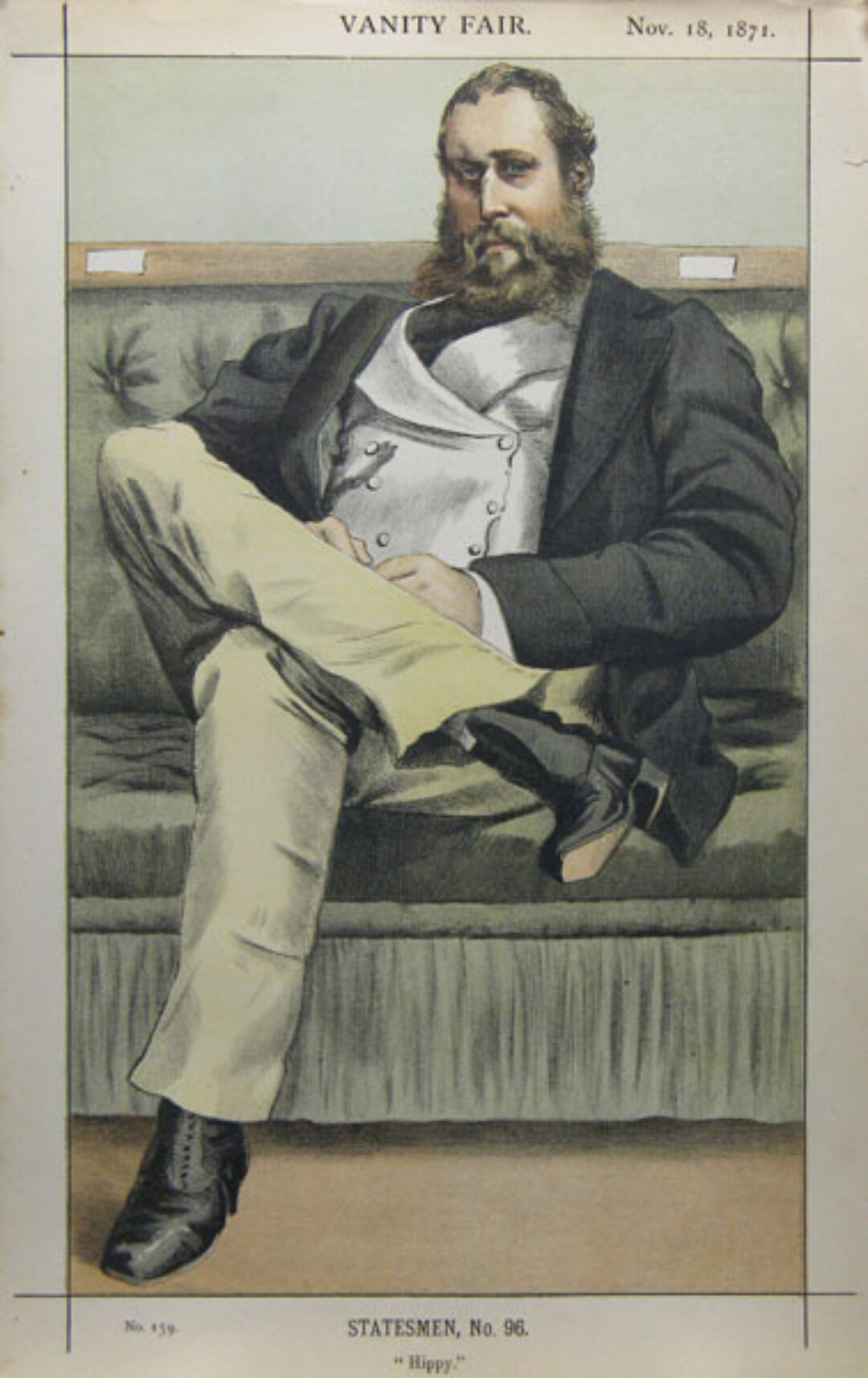
A great friend of Teddy, Palairet lived nearby at The Grove, Cheddon Fitzpaine, and was known to bolster the ranks of the Hestercombe Cricket Club for a few innings on occasion. Among the family members that Teddy welcomed to his rustic fishing retreat were his brothers, Henry, ‘who was constantly there’, and Gerald, also his cousin the Hon Charles Fitzwilliam and his brothers-in-law, the Rev. Algernon and Robert Lawley. Women were a rarity, although a local girl, Kari Hovland, was hired on as a cook and Charles Fitzwilliam brought his wife along on a visit in 1892. Additional servants were brought from England and ghillies (fishing attendants) from the valley were employed to help locate the most promising pools, recommend what flies to use and, of course, weigh and clean the catch at day’s end. Amusingly, Teddy and his fishing cronies are remembered as seldom heeding 8 the advice of their ghillies, at least when it came to fly selection: ‘The Englishmen would then choose the fly that looked the least like the recommended one. This happened every time without fail. They were so stubborn, they wouldn’t be persuaded. They always fished with fly. To use prawn was beneath their dignity.’ (Anders Lysne, 1974).
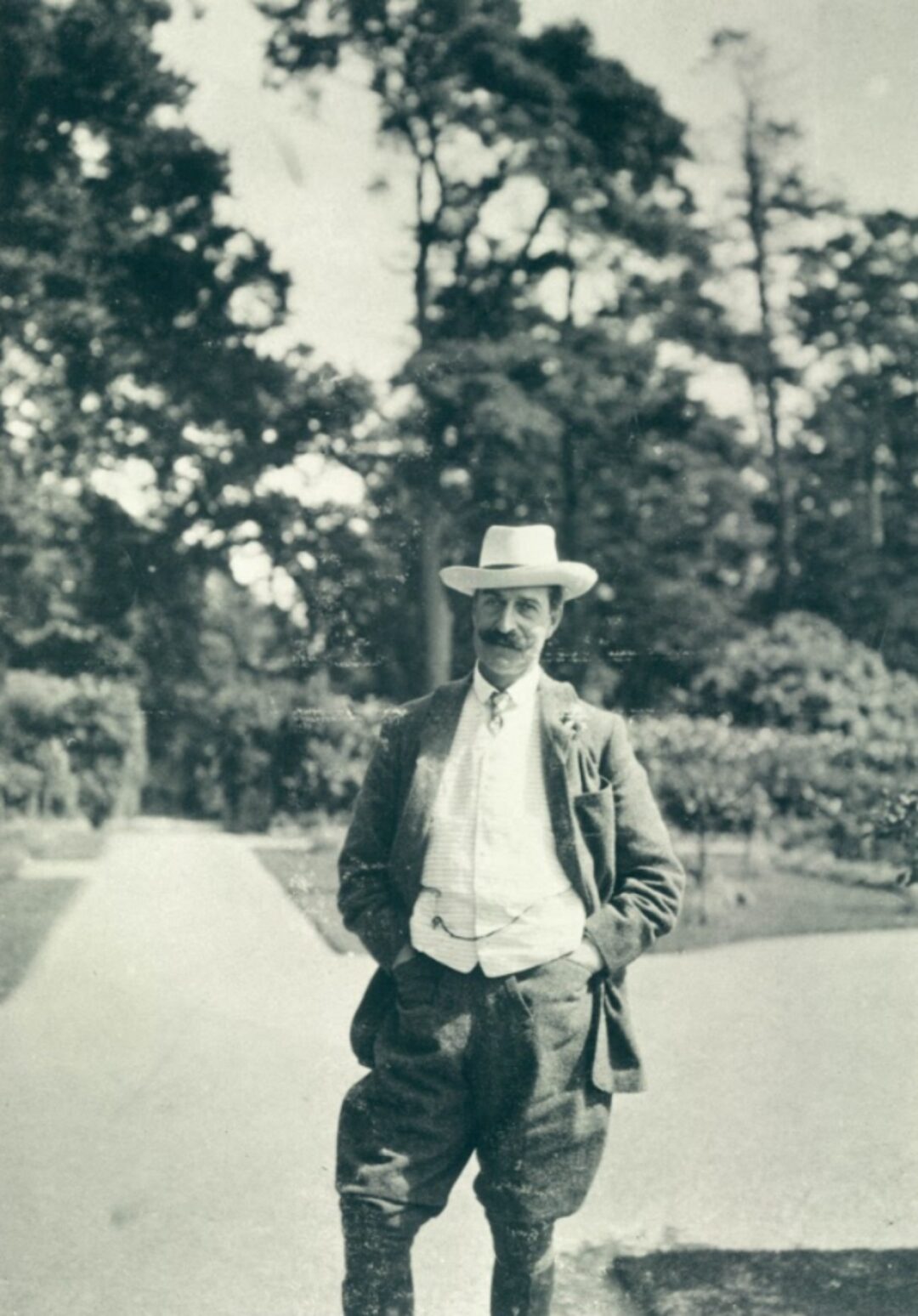
The fishing lodge by Øvre Ljøsne remained in Portman hands until 1922 when it was sold, complete with furnishings (some of which remain today, including a selection of dining utensils and silvery cutlery for 24, engraved ‘E W B P’ or ‘E. P.’) by Teddy's brother, Henry, now 3rd Viscount Portman, to Oslo ship owner and broker, Jorgen Brede Stang (1874-1950). Renamed Kapteinsgarden (Captain’s Farm) out of respect for the Captains of the Laerdal Light Infantry who once lived there, the lodge remains intact and is today owned by Stang’s grandson, billionaire shipping industrialist and art collector Hans Rasmus Astrup (1939-), owner, famously, of the Astrup Fearnly Museum of Modern Art in Oslo. His celebrity guests at ‘fashionable’ Kapteinsgarden have included King Carl Gustaf of Sweden and Norway’s own King Harald.
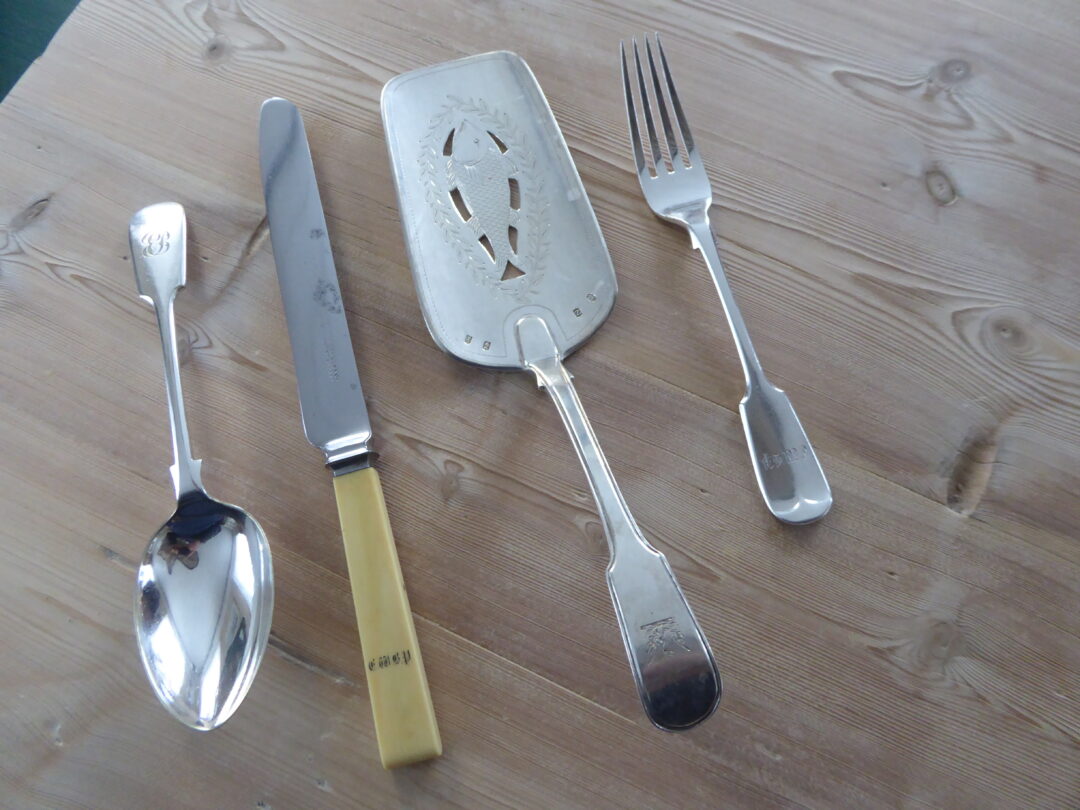
Foxhunting holds the first place among sports in Mr. Portman’s affections. He knows Dorsetshire pretty thoroughly, having hunted with all the county packs, and, before he undertook the mastership of the Taunton Vale hounds, acted at times as fieldmaster for his father, Lord Portman . . . Partridge shooting, walking and driving most appeal to him, and he is fond of a day with the rabbits. Mr Portman’s creed of reconciliation between hunting and shooting is tersely and lucidly expressed in the standing orders given his keepers – “foxes first, partridges second, ‘poultry’ third.” (Bailey’s Magazine of Sports and Pastimes [No. 482: April 1900], pp. 231-232) edict.
The autumn and winter months were largely given over to hunting and shooting. Described by Hestercombe Head Gamekeeper, Charles Henry Butters (1878-1963), as ‘a very great sportsman all round’, E. W. B. Portman hunted in his younger days with the South Oxfordshire, but was also known to ride with the Bicester and Warden Hill, and go out with the Old Berkshire in the Vale. Often acting as Field Master for his father, he was known in his home country of Dorset as ‘a bold, straight rider to hounds’ despite ‘requiring no ordinary class of weight carrier’ (due to his ample girth!). In May 1897 Teddy assumed the Mastership
of the Taunton Vale Foxhounds (est. 1876), an organisation whose prospects were then judged to be ‘far from rosy’. Undaunted, he steadily improved the fortunes of the pack over the next three seasons, draining coverts, preserving foxes ‘to the best of his ability’, and putting up over 200 new hunting gates, ‘so as to make the country more rideable'. Remaining true to his declaration, ‘partridges second’, the future heir to the Portman wealth set about stocking and preserving over 10,000 acres of land in the family’s Somerset estates for shooting after moving to Hestercombe in 1894, sparing no expense in the process. In his inaugural season at Hestercombe (1907) the Norfolk born C. H. Butters was the recipient of no less than three under keepers, spacious kennels for his dogs, a five-bedroom lodge with coach house and stables (Combe House), and a thousand pheasant eggs with which to stock what was then a predominantly partridge shoot. By 1909 Butters had reared sufficient pheasants that virtual parity had been achieved in the game bag, with 1,075 pheasants, 1,080
partridges and 132 wild duck killed. At the same time Teddy was making regular trips to Scotland in the autumn months where he could be found grouse shooting on the Aberarder moors in Inverness-shire. Lying south of Loch Ruthven in the parish Laggan, the low, scrubby moors also concealed good numbers of mountain hare. During one outing on the Aberarder moorlands in August 1909 the count for the Hon. E. W. B. Portman and party (3 guns) was 39 brace grouse, 23 hares and 1 ½ brace ptarmigan.
We have started the gardens at Hestercombe. It is such a typical self satisfied comfortable English sporting-squire of a house & place. I shouldn’t be surprised to be presented to porter & oysters between meals – but one isn’t. breakfasts. luncheons. teas. dinners. Enormous vast quantities of foods & wines for 4 persons – our number. (Edwin Lutyens to his wife, Lady Emily, 23 April 1904. RIBA Library ref 6/8/27).
Near the top of E. W. B.’s list of appetites was without a doubt, food, a fact that was clearly demonstrated by the Bart Simpson-like profile of the amiable squire. (At 6ft 2in. tall, Teddy weighed in decisively at 17 stone [238 lbs or 108kg]). Large crates of food, wine, and champagne were standard accoutrements on his annual pilgrimage to Norway, functions at home were lavishly catered by the likes of Gunter of Berkeley Square, London (E.W.B.’s coming-of-age fete), and an abundance of fruit and vegetables was on hand courtesy of the estate’s substantial 1.51 hectare (3.71 ac.) kitchen garden and modern range of glasshouses. Additionally, as Edwin Lutyens could not fail to notice on his visits, meal opportunities presented themselves at almost every turn (at 7, 8:30, 9, 1, 2, and 5!). That ‘the supper was of course excellent in all respects’ at the January 1897 ball was no doubt also due to a well-staffed establishment with first-rate culinary facilities. Apart from a generous dining room that comfortably sat twelve, Hestercombe House was equipped with a bake house, pantry, larder, game larder, beer cellar, wine cellar and still room with the bulk of food preparation taking place in a spacious kitchen, scullery and vegetable scullery that together comprised over 760 square feet (71 sq. m.) of floor space. Frederick Coole, the butler, was in charge of the pantry, wine cellar and dining room and Mary Roberts, the cook, supervised the kitchen and kitchen staff, which included a kitchen maid, a dairymaid and a stillroom maid. Two footmen, Joseph Marshall and Henry Palmer, assisted Mr. Coole with the meal service.
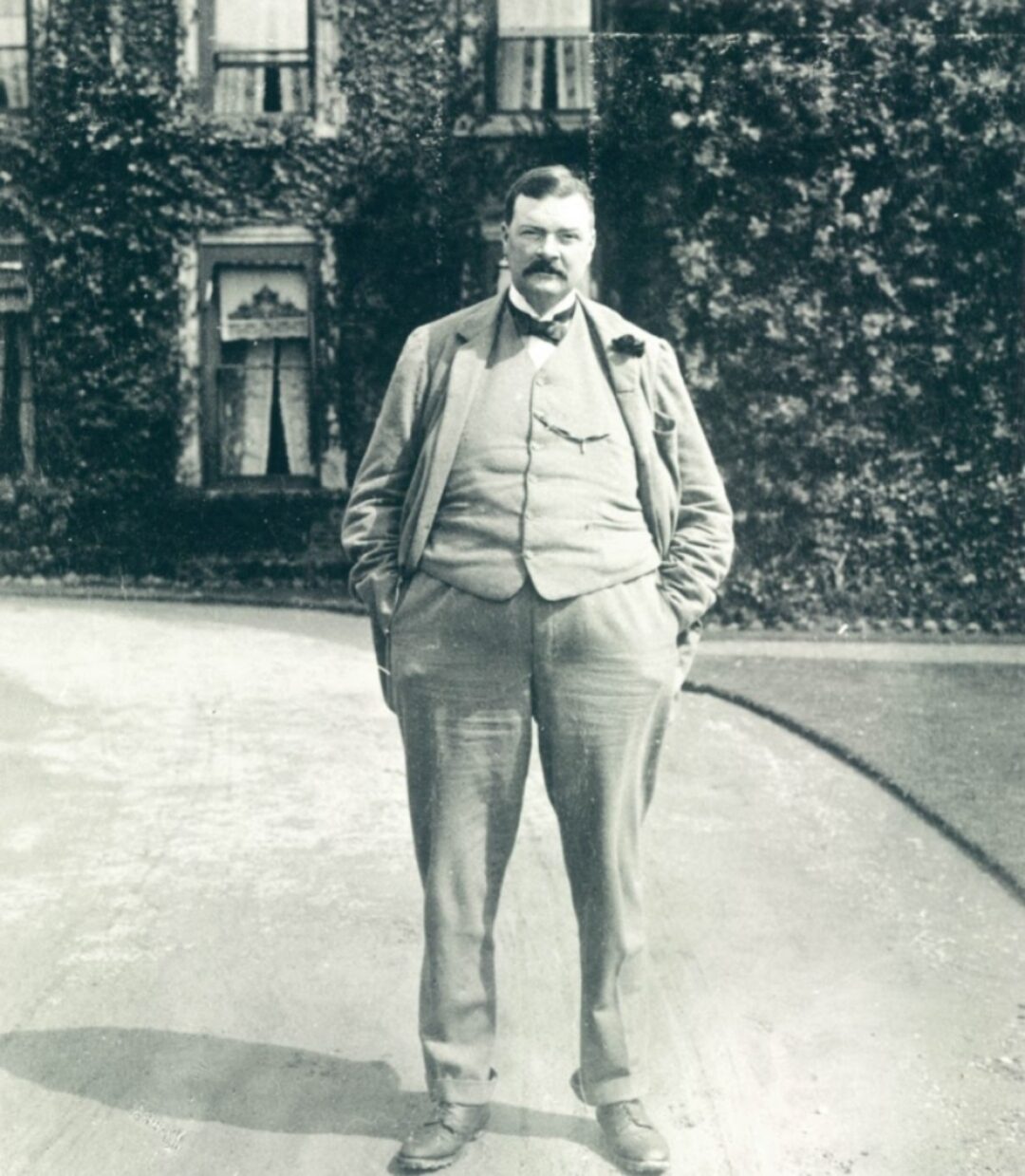
Teddy’s third great passion was supporting local charities. With Mrs. Portman and other members of his family, he subscribed thousands of pounds to a range of organizations in Taunton and environs that included the Kingston and Hestercombe Nursing Association, the Taunton and Somerset Hospital (of which he was president for many years), St. Saviour's Home for Boys, and the Taunton Association to Aid Consumptives. One of his final acts was to give £1,000 to the Taunton and Somerset Hospital and to pledge £5,000 to an endowment fund. In the words of the Rev. E. A. Ducket (vicar of Holy Trinity, Taunton) ‘he used his great social influence, and, better still, his keen personal endeavour, to put at the disposal of his neighbours the latest methods of scientific healing. To a medical staff, whose ungrudging and unselfish service the outside world too little realises, he brought fresh enthusiasm, and the Committee over which he presided transformed a building of antiquated inconvenience into a [healing] home of brightness and sweetness whose equipment will compare with almost anything to be found in provincial life’. Further afield Teddy served as president of the Queen Charlotte's Lying-in-Hospital, Marylebone Road, London, contributing £1,000 towards an Extension and Improvement Fund in 1896. And although he never demonstrated any ambitions for the national stage, E. W. B. was active at the local and regional levels serving as Justice of the Peace for both Devon and Somerset, Deputy Lieutenant, then High Sheriff of Somerset and, at the time of his marriage to Constance Lawley in 1892, as county councillor for the Pimperne Division of Dorset. He later supported the Somerset County Agricultural Association and the Devon Cattle Breeders Society in the capacity of president.
When Lord P. dies they [Teddy and Constance Portman] will roll in gold. (Edwin Lutyens to his wife, Lady Emily, 23 April 1904. RIBA Library ref 6/8/27).
The Hon. E. W. B. Portman did not ‘roll in gold’ as predicted. His destiny proved much more tragic. On Thursday 27th of April 1911, E. W.B. died from complications arising from double pneumonia contracted while playing golf at Pickeridge Golf Club at Corfe near Taunton. For a week Teddy fought the infection and, with the aid of a London specialist ‘and five or six other medical men’, appeared to be making progress until Wednesday evening when he took a turn for the worse. To those who were familiar with the squire’s chequered medical history, the final outcome of his illness was less of a shock. Teddy had narrowly escaped death from typhoid fever on at least two occasions, most recently in November of 1893 when he became 'seriously ill' with the bacterial infection while at his rented accommodation at St. Giles’s House. As his condition worsened there was ‘great anxiety and horror in Dorset’ and Teddy’s doctors were obliged to issue a statement: 'The Hon. E. W. B. Portman has typhoid fever which up to thirty-six hours since was running its usual course. He then had an attack of haemorrhage, which yielded to treatment, and there has been no return this morning. The temperature is lessening. The patient had some nice sleep last night, and his symptoms are generally more favourable, although still serious.’ Among the medical specialists treating Teddy during those difficult days was the eminent Sir William Broadbent (1835-1907), Bart. K.C.V.O., physician extraordinary to H. M. Queen Victoria and physician in ordinary to the King and to the Prince of Wales. A leading British authority in the fields of cardiology and neurology, Sir William had made four trips to Dorset from his home in London by late November, much to the relief of Mrs. Portman, her mother Lady Wenlock, and her sister who maintained an almost constant vigil at Teddy’s bedside. By 8 December The Western Gazette could report with relief that ‘it would appear he [Teddy] is now practically out of danger.’ A convalescence at the seaside in Bournemouth followed in the spring and by early July 1893 E. W. B. was fully recovered and had ‘gone to Norway for a few weeks salmon fishing’.
E. W. B. Portman was laid to rest on 1 May 1911 in Cheddon Fitzpaine churchyard, following a service ‘of a most impressive yet simple character’ arranged by Messrs. Hatcher & Sons, Ltd., Taunton. The main ceremony was held in the Church of the Blessed Virgin Mary, Cheddon Fitzpaine, but it was deemed necessary -- due to the extremely high turnout expected -- to also hold memorial services at St. Mary’s, Taunton, St. Peter’s, Staple Fitzpaine, and Bryanston Church, Blandford, Dorset, the last being the parish church frequented by the Portman family. All of Somerset mourned. By mid-day on the 29th
of April, flags were flying at half-mast from the church towers and main public buildings of Taunton and blinds were drawn all along the route leading to Cheddon Fitzpaine. Hundreds stood outside the gates to South Lodge in an attempt to catch a glimpse of the funeral cortege, as it passed on its way to Cheddon Fitzpaine Church and many more gathered in the village street for the same purpose.
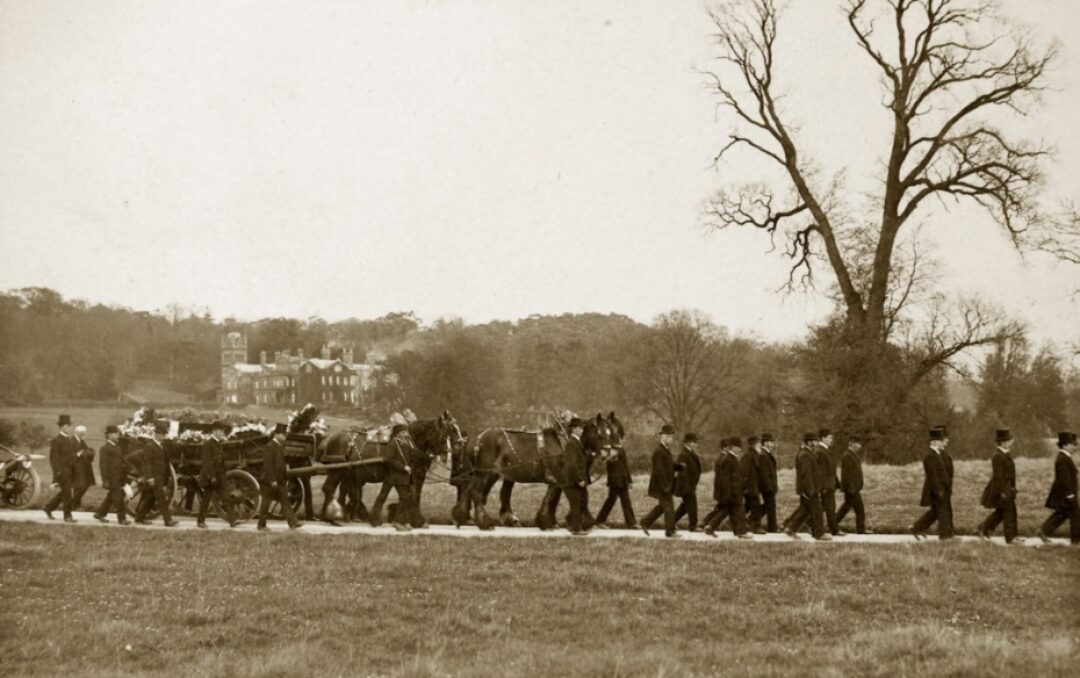
Despite the large crowds, the police under Superintendent Stoker of Taunton were able to maintain the peace without incident as ‘the people made their task easy by keeping the best of order and not rushing about’. The funeral procession left Hestercombe at 2:00 pm, proceeding down the long winding drive that crossed the parkland below the House and then through the woodland, Sandilands, before bearing eastwards at South Lodge and into Cheddon Fitzpaine. The estate’s senior staff came first on foot, followed by a farm wagon drawn by four fine horses on which Teddy’s coffin was arranged: ‘It was fitting that such a bier should be improvised for one who in no half-hearted manner strove his best for agriculture and those connected with it’, wrote the reporter for The Western Gazette. The chief mourners followed the wagon in private carriages and included Mrs. Portman and her two sons, Osbert and Thomas; her brother, the Hon. Richard Thompson Lawley (the future 4th Baron Wenlock); her sister Katherine Forbes (Lawley) and Katherine’s husband, Walter Forbes; and Mrs. Portman’s sister-in-law, the Hon. Mrs. Algernon Lawley, Hackney. Among the Portman family members represented in the private carriages were E. W. B.’s four brothers, Seymour, Gerald, Claude and Henry; his cousins Commander W. Portman and the Hon. Mrs. Maurice Portman of North Petherton; and his nephew John David Leslie-Melville, 14th Earl of Leven of Kirlington Park, Oxford. Teddy’s salmon fishing cronies, W. A. Bailward and Captain the Hon. Francis Johnstone were also among the chief mourners as were two two of his senior staff at Hestercombe: Mr. E. C. Trepplin (agent) and Mr. W. D. Miller (private secretary).
The church was, as expected, filled to capacity and many waited outside in the churchyard for the committal portion of the service to begin. The main ceremony was led by no less than nine men of the cloth, including the Right Rev. Dr. Kennion (Bishop of Bath and Wells), the Rev. and Hon. Algernon Lawley (rector of St. John-at-Hackney, London), Rev. H. F. B. Portman (rector of Orchard Portman and Thurlbear), Rev. R. Payne Smith (rector of Cheddon), Rev. G. Ruck (vicar of St. Andrew’s Taunton) and Rev. T. F. Forth (chaplain St. Mary’s, Hestercombe). Mrs. Forth played a selection of hyms and as the coffin was borne from the church ‘the beautiful and consoling strains’ of “O, Rest in the Lord” provided comfort to all. The sides of the grave were decorated by the Hestercombe gardeners with bunches of forget-me-nots and sprigs of rosemary (symbolising sorrow) and, in a final farewell, Mrs. Portman placed a bouquet of forget-me-nots on the coffin which bore a cross of rosemary and forget-me-nots.
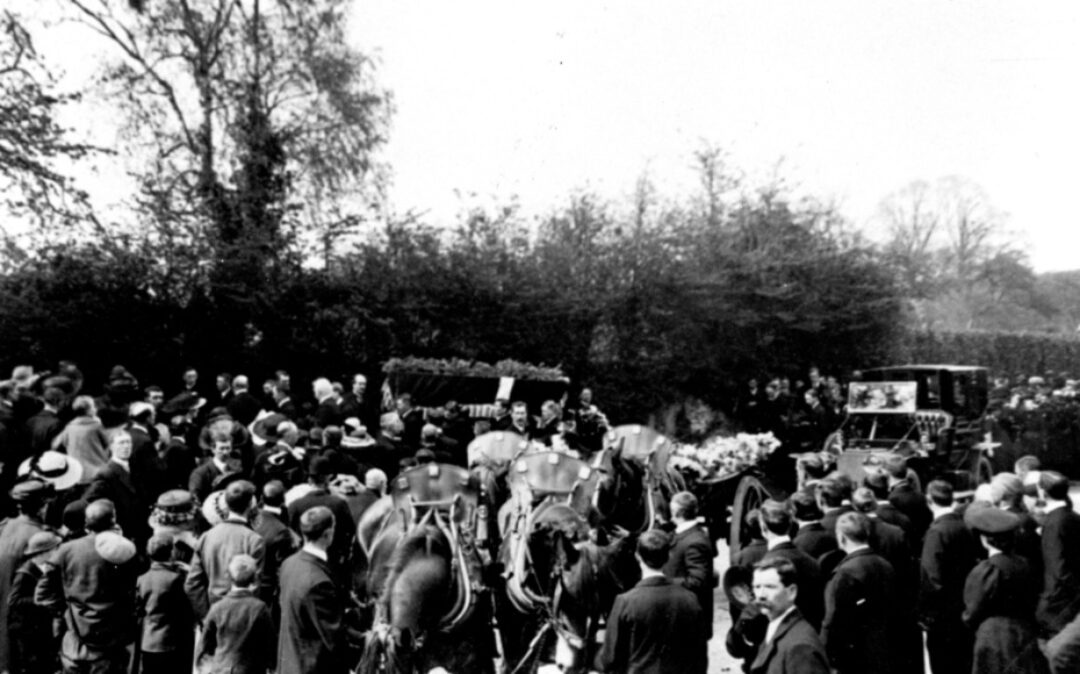
The general mourners were a virtual Who’s Who of South Somerset, a virtual cross section of the area’s major landowners, charitable heads, local government figures, sports club chairmen and senior, mostly retired, British Army officers. There was the Hon. Aubrey Herbert, Pixton Park, Dulverton; the Hon. H. P. Gore-Langton, Hatch Park, Taunton; Mr. C. Kemys-Tynte, Halswell Park, Bridgwater; General Utterson, Cotlake House, Taunton; Colonel W. O. Meade King, Walford, West Monkton (Chairman of the Taunton County Bench); Colonel W. Barrett (commander West Somerset Yeomanry); Captain H. A. Kinglake, Wilton House, Taunton (Master of the Taunton Vale Foxhounds); Captain H. E. Metcalf (Chief Constable of Somerset); Mr. R. A. Goodman, Taunton (Secretary of the Taunton and Somerset Hospital); Dr. R. L. Meade-King, Taunton (Taunton Association to Aid Consumptives); Mr. F. H. Berryman, Shepton Mallet (Chairman County Works Committee); Mr. E. Robson and Mr. E. Chidgey (Somerset County Cricket Club); Mr. T. Holt (Burnham and Berrow Golf Club); Mr. J. Willington (Monkton and Hestercombe Horticultural Society); Ven. F. A. Brymer (Archdeacon of Wells); Mr. G. Vickery (Norton Mills Co.); and Messrs. R. Bruford, C. L. Hancock, R. L. Cornish and Gordon Skinner (Devon Cattle Breeders’ Society) to name but a few. From the ranks of the Hestercombe servants came Mr. Hubbard (head gardener), Mr. E. Picard (estate forester) and Mr. C. H. Butters (head keeper). The tenants from the Yeovil area, the workers from Orchard Portman and Staple Fitzpaine and the staff of the Portman (Somerset) Estate Office at Billetfield House, Taunton, also attended.
Among those present at the memorial service held at St. Mary’s, Taunton were the Mayor of Taunton (H. J. Spiller), the Town Clerk (Mr. G. H. Kite) the ex-Mayor (Councillor W. H. Westlake), two alderman, three councillors, C. Tite and H. Franklin (Somerset Archaeological Society), J. Wool (master St. Saviour’s Home, Taunton), F. H. Knight (post-master of Taunton), J. H. Smith (consulting borough engineer), Miss Orr (matron Taunton and Somerset Hospital), Miss Robins (assistant matron), along with seven doctors and twelve nurses, including the sisters of the Hospital wards.
Over 100 floral tributes were received, including those sent by the Hestercombe tenants, household, gardeners, keepers, estate workers, and farmhands. The gamekeepers at Orchard Portman followed suit, as did the servants from 1 Hyde Park Street, London, and the nursing staff of the Taunton and Somerset Hospital. Flowers were also received from Kyril Chapman’s widow (Teddy’s hunting and fishing friend died in a hunting accident whilst riding with Lord Portman’s hounds in 1891) and from E. W. B. Portman’s great friends, Mr. and Mrs. L. C. H. Palairet. The famous cricketer and former sub-agent on the Portman (Somerset) estates, was now steward to Charles Pepys Courtenay, 14th Earl of Devon, at Powderham near Exeter.
E.W.B. bequeathed all his freehold and leasehold property to his oldest brother, the Hon. Henry Berkeley Portman, leaving the residue of his estate to his wife, Constance, who was allowed to stay on at Hestercombe House and grounds as a life tenant. She died there on 4 May 1951, aged 97 years.
